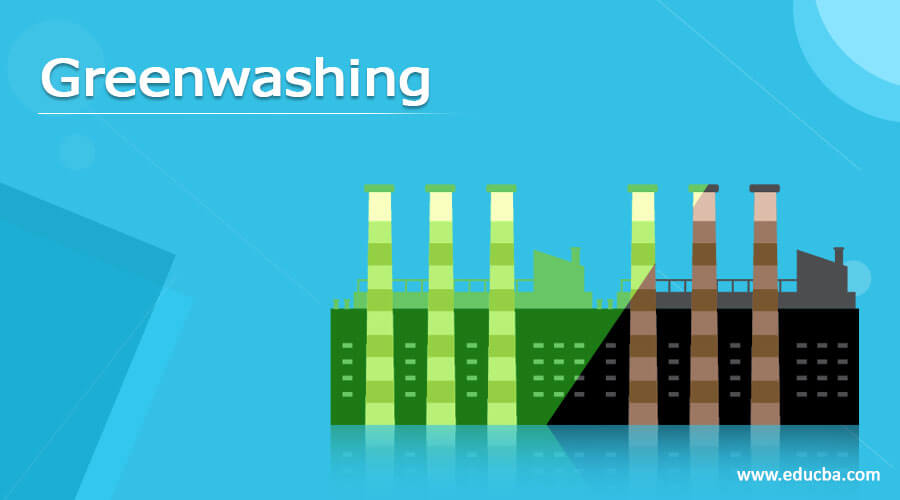Updated July 13, 2023

What is Greenwashing?
The term “greenwashing” refers to the process in which firms spend a large sum of money to promote their goods or services to be an environmentally friendly while, in reality, they aren’t.
In other words, it is the act of making deceptive and false claims that the company outputs are produced in a way that hardly impacts the environment. This term was first coined in 1986 by an environmentalist named Jay Westerveld in an essay in which he revealed how the hotel industry deceptively promoted its reuse of towels as a strategy inspired by its concern for the environment while, in reality, it was simply a cost-saving measure. Greenwashing is also seen as a wordplay around the term whitewashing, involving misleading details to conceal unpleasant facts deliberately.
Key Takeaways
Some of the key takeaways of the article are:
- Greenwashing refers to companies’ deceptive and false claims to leverage the growing customer preference for environmentally friendly goods or services.
- The growing demand for greener products but the cost associated with going green is causing several businesses to claim to have green credentials falsely.
- To spot greenwashing, you should avoid getting driven by the green buzzword, research the company, and look for validation from a credible third party.
How Does Greenwashing Work?
Today people in the world are becoming more conscious of the environment. This awareness in society is resulting in a gradual shift of consumer preference from environmentally harmful goods or services toward ecologically friendly ones. Hence, companies are forced to integrate environmentally friendly practices into their business operations.
It is essential to understand that going green involves high costs in terms of time and money. As such, the ongoing consumer pressure to go “green” and the cost associated with the shift is causing many businesses to claim to have green credentials falsely. This way, these firms can generate positive public relations that boost their brand image.
Example of Greenwashing
Now, let us look at some real-life examples of greenwashing to understand the concept and its prevalence in today’s world.
1. British Petroleum (BP)
The oil giant BP launched the ‘Keep Advancing’ and ‘Possibilities Everywhere’ ad campaigns focused on its low-carbon energy products. However, an environmental group named ClientEarth lodged an OECD complaint against the company in December 2019. The complaint stated that the ad campaign was an attempt to mislead people to believe that BP was taking extensive measures towards renewables when, in fact, hardly 4% of its annual spending was directed towards these low-carbon energy products.
2. Starbucks
In 2018, Starbucks launched its straw-less lid, part of its eco-friendly offerings. But later, there was a revelation that the new straw-less lid uses more plastic than the old straw and lid combination. Although the company didn’t challenge the claim, it argued that the product was made out of polypropylene, a form of plastic that can be recycled. However, the critics were not very satisfied with the argument as they pointed out that only 9% of the globally available plastic is recycled. So, it is unlikely that all the lids will eventually be recycled.
3. H&M
Despite investing nominal amounts for green initiatives, fast fashion brands usually promote these initiatives extensively. For example, in 2019, H&M came up with its green clothing line, “Conscious.” The company claimed it used recycled polyester and organic cotton for this clothing line. However, it was just a misleading promotion strategy intended to leverage a market characterized by a shifting customer preference toward environmentally friendly products.
How to Spot Greenwashing?
Identifying and calling out the greenwashing attempts to end these marketing gimmicks is essential. The following are some of the ways to do it:
- Don’t get driven by the green buzzwords: Typically, companies tend to attract customers by claiming to be environmentally responsible. So, they use words like “eco-friendly,” “sustainable,” “recycled,” etc., in their products without clarifying how they achieved the status. So, if you fail to find any substantiating evidence for their claim, it is a greenwashing case.
- Research the company: Most companies extensively promote those products or services with environmental benefits implying that the entire company is environmentally responsible, which might not be the case. So, research the company’s total value chain before making a decision.
- Look for validation from a credible third party: Companies that achieve the feat of becoming green are usually validated by third parties. If the claims lack validation from any external environmental auditing organization, then it is likely that the claims are not genuine.
How to Stop Greenwashing?
To end greenwashing, we all should ensure that the goods or services we purchase come from companies genuinely investing in measures to fight the climate crisis. This can be done following what has been discussed in the previous section. Further, we can join hands with larger organizations to force the big businesses to take responsibility and contribute to the fight against an imminent climatic change.
Conclusion
So, greenwashing can be seen as misleading packaging of an environmentally destructive entity. It is a deliberate attempt to make the customers believe that the company is greener than it is. Therefore, we must be able to identify these greenwashing attempts as it is the only way to end these practices.
Recommended Articles
This is a guide to Greenwashing. Here we also discuss the definition, working, example, and how to spot and end Greenwashing, along with key takeaways. You may also have a look at the following articles to learn more –
